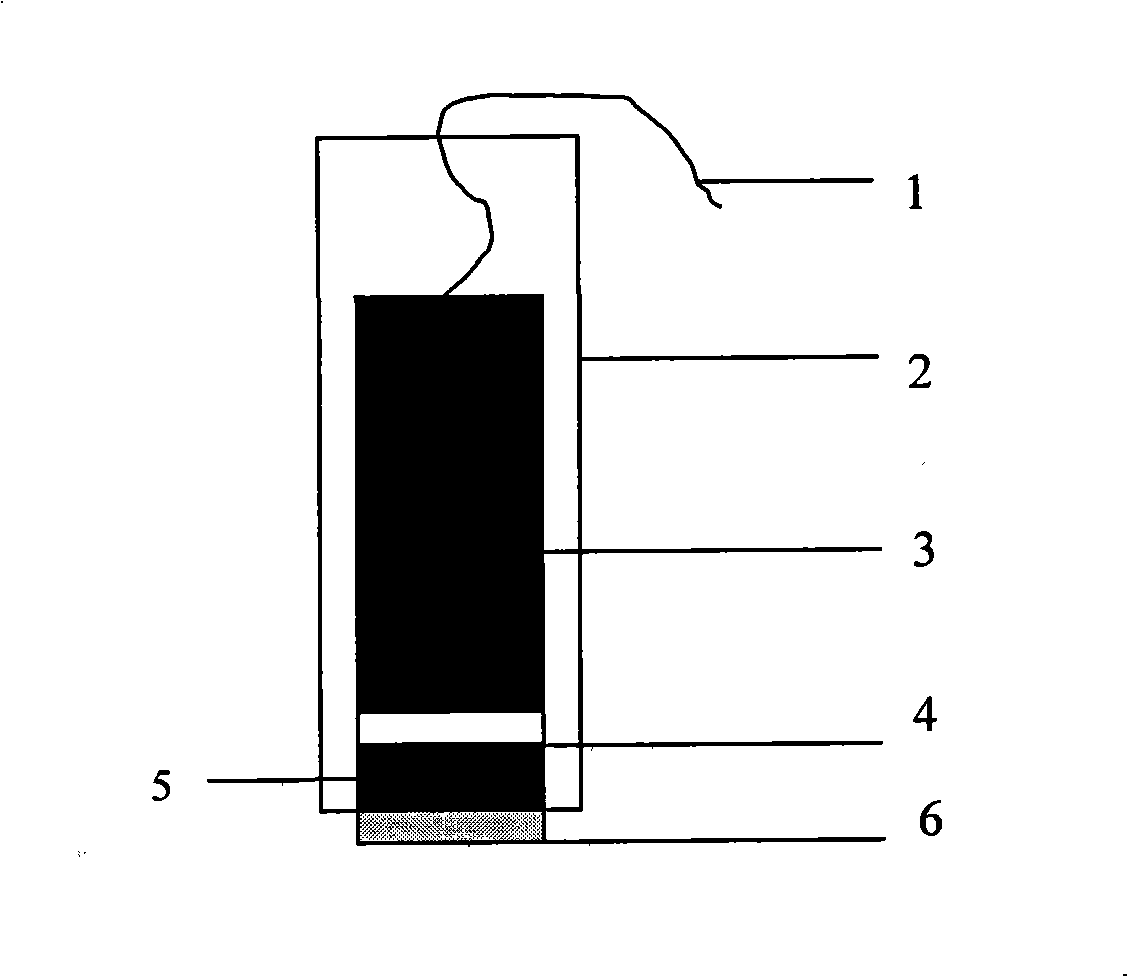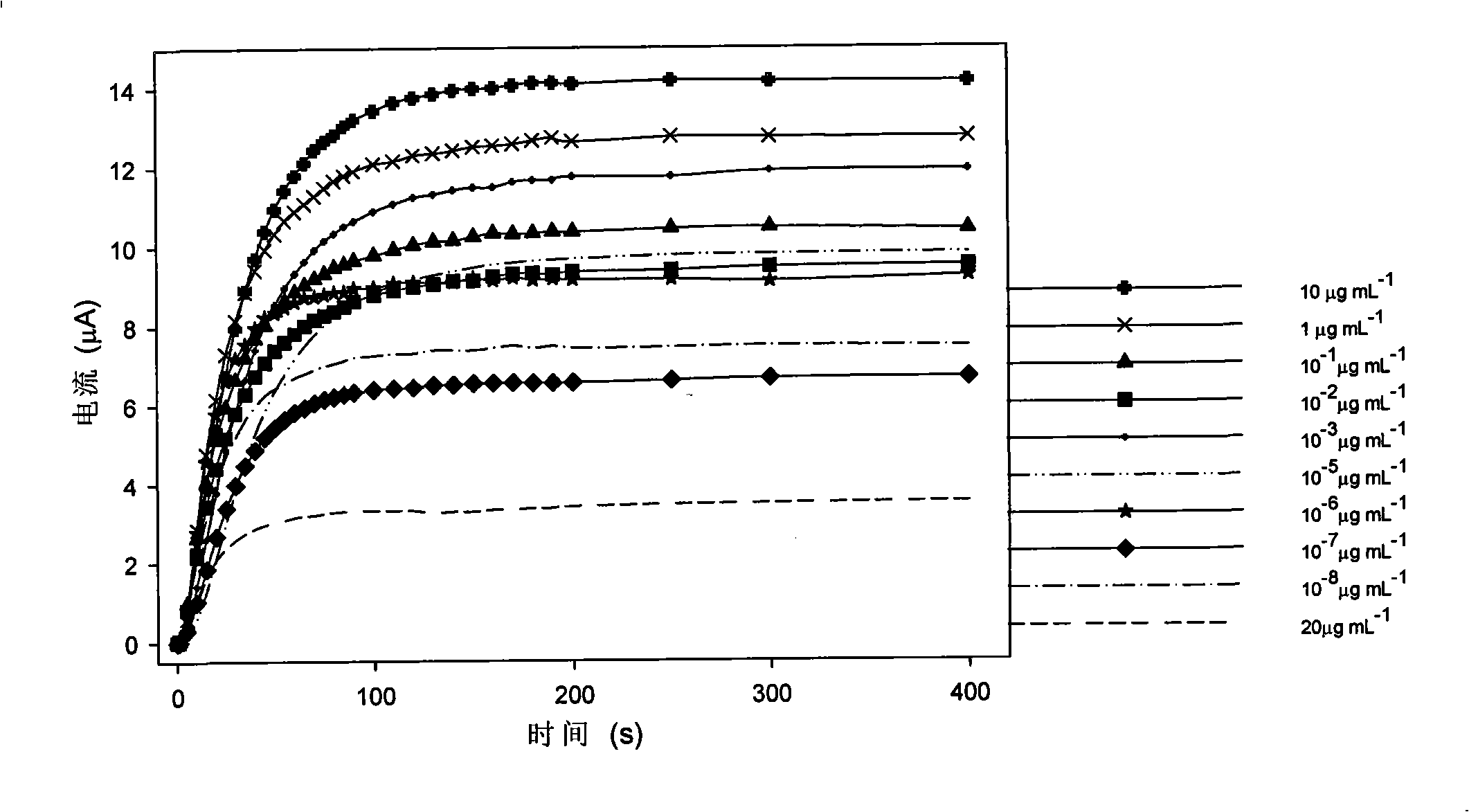Immune sensor for detecting picloram in compost, and production and use method thereof
An immune sensor and picloram technology, applied in the application field of detection and analysis, can solve the problems of environmental pollution, inconvenient analysis system integrated signal output, and inability to perform real-time detection, so as to improve sensitivity and anti-interference ability, solve real-time On-Line Monitoring Problems, Effects of Accurate Target Identification Capabilities
- Summary
- Abstract
- Description
- Claims
- Application Information
AI Technical Summary
Problems solved by technology
Method used
Image
Examples
Embodiment
[0031] Utilize immunosensor and detection method of the present invention to measure 3 groups of compost leachate samples containing picloram, the detection steps and detection results are as follows:
[0032] 1. Preparation of immunosensor
[0033] like figure 1 As shown, first make a carbon paste electrode, put a carbon rod 3 in the PVC pipe 2, put a magnet 4 close to the end of the carbon rod 3 and 8mm away from the nozzle of the PVC pipe 2, and form a magnetic region, and then use the carbon paste 5 to seal the pipe The mouth of the carbon rod 3 is closed, and the other end of the carbon rod 3 is led out of the PVC pipe 2 through the wire 1 to obtain a magnetic carbon paste electrode; the surface of the electrode is polished, and then the surface of the electrode is washed with water, and then HNO 3 (mass fraction is 50%), acetone, water carry out ultrasonic cleaning, finally rinse with phosphate buffer saline, dry naturally; Then under nitrogen protection, prepare Fe 3...
PUM
 Login to View More
Login to View More Abstract
Description
Claims
Application Information
 Login to View More
Login to View More - R&D
- Intellectual Property
- Life Sciences
- Materials
- Tech Scout
- Unparalleled Data Quality
- Higher Quality Content
- 60% Fewer Hallucinations
Browse by: Latest US Patents, China's latest patents, Technical Efficacy Thesaurus, Application Domain, Technology Topic, Popular Technical Reports.
© 2025 PatSnap. All rights reserved.Legal|Privacy policy|Modern Slavery Act Transparency Statement|Sitemap|About US| Contact US: help@patsnap.com



